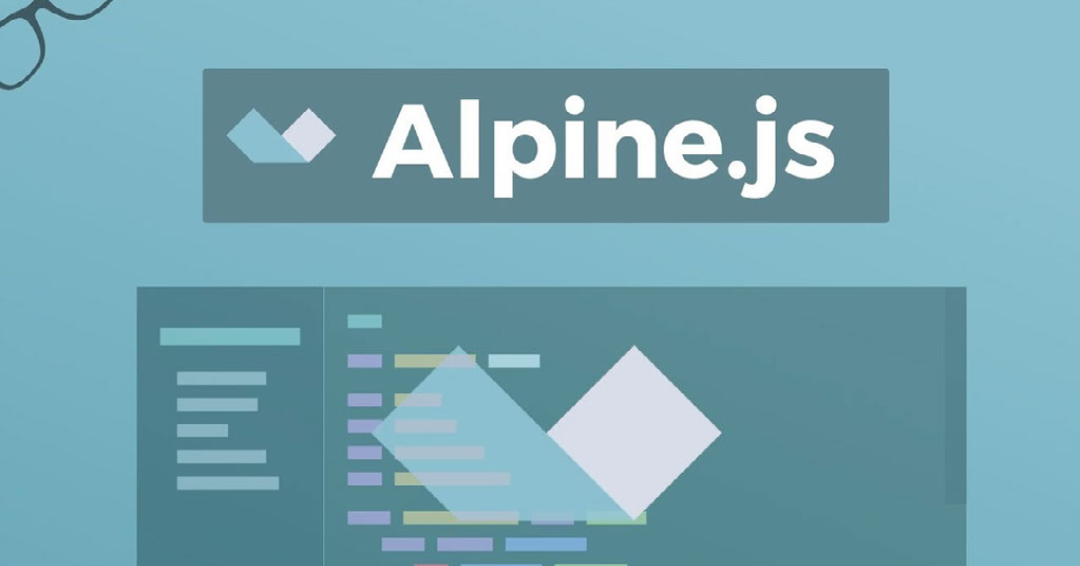Overview
Alpine.js is a stable, minimal frontend development structure for HTML markups to add JavaScript behavior. It allows the use of the reactive and declarative nature of standard frontend libraries and frameworks. Mainly Angular, React, and Vue at a much reduced rate. Alpine is not intended as a replacement for frameworks like Vue and React. It is safer to stick to Angular, Vue, or React if you have a highly interactive single-page application. If your project requires just less or minimal JavaScript, then it is best to use. If you need only one or two elements, for instance, such as drop-downs, sidebars, tabs, and image collection.
This framework is suitable for server-side built applications such as Laravel and Rails. You’ll need to move to some components of JavaScript for this. And since it doesn’t have a virtual DOM, it’s simpler to set up and doesn’t have any construction steps. Lastly, in your application, Alpine.js has a minimal footprint.
It is straightforward to install Alpine.js. You can use either npm or CDN and add the following to your HTML header section. Alpine.js is for developers who do not want to create a single application page (SPA). It’s lightweight and designed for JavaScript client-side markup-driven writing. The syntax is carry off from the directives Vue and Angular. This means that if you have worked with them before, you will feel more familiar. Alpine.js is not built to create SPAs, but with a little bit of JavaScript to improve your models. The Alpine.js warning message part is link to the input in two directions using x-model=’msg’. A reactive level property is to set the ‘level’ of a warning message. The warning shows when there is a value for both msg and value.
Alpine.js
- It will be available in a separate library. A virtual DOM does not take over the DOM.
- They are not intended for single-page wide application.
- You do not need a separate .js file for JavaScript. But they can build another one if developers want to.
Difference between jQuery and Alpine.js.
Alpine.js is like a JavaScript and jQuery substitution, but with declarative rendering. Instead of a React/Vue/Svelte/WhateverFramework competitor, Alpine.js is a Vue template-flavor substitute for jQuery and vanilla JavaScript. Alpine.js can make assumptions about DOM APIs that jQuery cannot. The main comparison between the two are below:
Querying vs. Binding:
The bulk size and functionality of jQuery come in the form of a cross-browser compatibility layer over imperative DOM APIs. This commonly refer to as jQuery Core and sports characteristics that can query and control the DOM. Alpine.js response to jQuery core in a declarative way to bind data to a DOM using the x-bind attribute binding directive. This is to attach any attribute on the Alpine.js component to reactive data. Moreover, they offer x-ref as an escape hatch for direct access from JavaScript component code to DOM elements when the binding is not appropriate.
Handling events:
A way to manage, create and trigger events is also produced by jQuery. The x-on directive and the $event magic value are lay out by Alpine.js, enabling JavaScript functions to handle events. They also offer the $dispatch magic property to trigger events, a thin wrapper over the Event and Dispatch Event APIs of the browser.
Effects:
One of the main characteristics of jQuery is its effect, or its ability to write simple animations. Creates effect using the slideUp, slideDown, fadeIn, fadeOut properties in jQuery. Alpine.js offers a set of x-transition directives that add and remove classes during the element transition, inspired by Vue Transition API.
Plugins:
It is better to say as jQuery plugins. There is no contrast with that in the ecosystem of Alpine.js. It is relatively easy to share Alpine.js components, usually requiring a simple copy and paste event. The JavaScript components of Alpine.js are only functions and do not appear to access Alpine.js itself. This makes them reasonably easy to distribute by providing them with a script tag on various websites. If Alpine initializes or is passed into bindings, like $event in x-on bindings, then the magic properties are added up. There are no examples of Alpine.js extensions at present. But there are a few problems and pull requests from other libraries to add “core” events that hook into Alpine.js.
Size:
Alpine.js is lighter than jQuery in size. Alpine.js arrives at 21.9kB minified to 7.1kB gzipped, while jQuery at 87.6kB minified to 30.4kB minified and gzipped. How can Alpine.js become lighter even though Vue is similar to it’s API? Alpine.js do not implement a Virtual DOM. Instead of exposing the same declarative API as Vue, it explicitly mutates the DOM.
Main properties:
- Capturing user inputs: The x-model allows us to synchronize any input variable with the values that are set using x-data.
- Click events, Boolean attributes and toggling classes: As with Vue “:” is an x-bind shorthand, and “@” is an x-on shorthand. For different classes, x-bind functions differently.
- Hiding and showing: This will set the display: none to a given DOM node. They use x-if , if you need to remove a DOM function fully. However, since Alpine.js does not use a Virtual DOM, it is only possible to use x-if on <template></template>.
What are the magic properties?
Magic Properties have some extra features in addition to the above directives. They will all be familiar to everyone who is working in Vue.js.
- $el will fetch the root portion or component (the x-data attribute thing);
- $refs make it possible to catch a DOM element;
- $nextTick guarantees that expressions are only carry out until Alpine has done it;
- $event is to record an event from a nature browser.
Benefits and Limitation of Alpine.js.
Benefits:
- It is simple to begin or start with,
- The same kind of declarative data binding which we enjoy with other frameworks of JavaScript.
Limitations:
- You can’t have nested elements or have them connect easily.
- When non-interactive activities cause updates, the page (DOM) is not updated.
Why should we choose Alpine?
Alpine.js requires minimal coding, and it’s easier to read. When it comes to syntax, Alpine.js has borrowed a lot from Vue.js, but it works with an established DOM. Alpine.js is very excellent and amazing to use. It is lightweight, and it ensure no more context switching between HTML and JavaScript files. No building phase is required, just like Vue and jQuery. Alpine initializes itself, unlike Vue, so there is no need to build a new case. The Alpine framework makes DOM manipulation simple. Alpine.js works well with Bootstrap while designing things.
- Displaying and hiding DOM nodes in particular situations or conditions,
- Binding user input,
- Listening and changing the UI for events accordingly,
- Appending classes.
Bottom Line
Since the application code is declarative, Alpine is compact and is declared through templates. In Alpine.js, bindings and event listeners with a syntax that is remarkably similar to Vue models. Alpine.js does not have a complete template language, so no syntax interpolation is possible. Instead, the x-text and x-html directives are for binding dynamic content. Alpine.js is considered to be used to provide direct scripts from a public CDN. For that, the developer experience is personalized. That’s why it makes for perfect contrast and substitution for jQuery. It’s release in and removes a build step.
Alpine.js is a modern, CDN-first library that provides declarative rendering without the build stage and templates required by other frameworks for a small payload. The result is an HTML-centered technique that looks like a modern-day jQuery and a perfect replacement for it. So when you need a small amount of JavaScript, e.g., a few dropdowns or tabs, Alpine.js works well.




